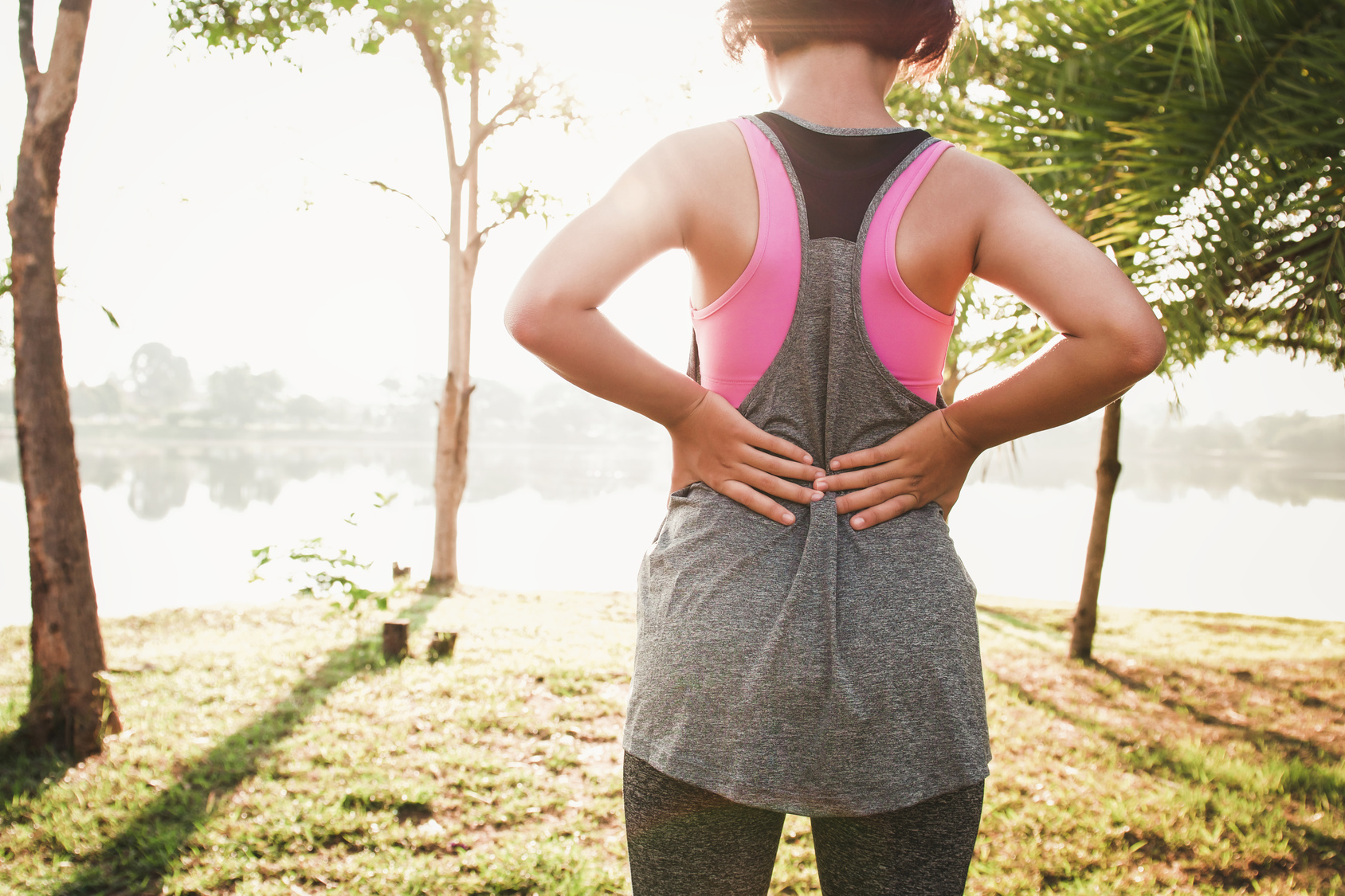Running has a bunch of fantastic benefits, but thanks to the high-impact, and repetitive nature of the sport, it can also lead to some uncomfortable issues.
From leaky bladder to gassy stomach and diarrhea, these common running problems can not only compromise your workouts, but they’re also quite embarrassing
But, it doesn’t inherently mean that you have to suffer. Sometimes you only need to know the precaution.
In today’s post, I’ll take a look at some of the most embarrassing problems runners face as well as how to heal them or even prevent them altogether.
Sounds great?
Let’s lace up and dig in.
Runner’s Diarrhea
Also known as runner’s trots, runner’s diarrhea isn’t just humiliating but can also ruin your runs. Surveys show that roughly 30 to 50 percent of runners reported suffering from the urge to defecate during training.
The main causes may be dietary or caused by reduced blood flow to the digestive tract while running.
Dehydration, the jarring nature of running, and increased intake of air as you breathe hard can make symptoms worse. There’s a reason why it’s dubbed after runners.
How To Ease and Prevent Runner’s Diarrhea
To keep runner’s diarrhea at bay, try these tactics and see if they make a difference:
- Eat at least three hours before a run. The longer the time between your meals and your workouts, the better, as it gives your digestive system plenty of time to process the food.
- Avoid high-fiber foods (fruits, whole grains, legumes, and some veggies) as well as caffeine and artificial sweeteners before a run.Less spice will do you good.
- Dehydration increase GI issues risk and slows gastric emptying by a colossal rate. Here’s your full guide to proper hydration.
- Map out your long runs along routes where pit-stops or bathrooms are accessible. Remember to carry some extra toilet paperor wet wipes
- Consult a doctor about taking anti-diarrhea medicine. Ailments such as colitis, lactose intolerance, and irritable bowel syndrome are common culprits.
Leaky Bladder
Technically known as “exercise-induced urinary incontinence,” leaky bladder is pretty common.
Both men and women experience leaky bladder, but females are more prone due to multiples factors such as childbirth (as it weakens pelvic floor muscles). So it’s not surprising that surveys show that roughly 25 percent of women have experienced it during exercise.
When these muscles become weak, anything from a cough to the up-and-down motion of running can squeeze urine from the bladder
How To Ease & Prevent A Leaky Bladder
I’m no expert on bladder issues, but my research says you should try the following:
- Practice Kegel exercises. These strengthen the pelvic-wall floor muscles and are the recommended cure for most cases of incontinence.Use a tool such as kegel balls.
- Empty your bladder before you run. Stopping by the toilet makes a huge difference in controlling leaks.Make sure it is really empty; otherwise the remaining urine might leak out later due to vigorous movement.
- Consult your doctor if everything else fails. Severe cases may require medical intervention.
Passing Gas While Running
Log in enough miles, and you’ll definitely have to fart at one time or the other.
It may go unnoticed on a solo run, but it’s embarrassing if you’re running with a partner or in a group.
Research shows that athletes—beginners and elite—are more prone to intestinal gas than sedentary adults, affecting up to 50 percent of athletes.
The causes of gas are multi-faceted. But, all in all, air trapped in the digestive system is mostly to blame.
When we eat, we’re also swallowing air without even noticing it. This extra air gets trapped in our digestive tract, then, eventually, find its way out of the body either through flatulence or belching.
So what does running has to do with it?
High-impact exercise speeds up the digestive process, forcing the release of gases within the digestive tract.
Additional Resource – Here’s the full guide lower abdominal pain while running.
How To Ease & Prevent Running Flatulence
Some of the factors that contribute to running flatulence are similar to that of runner’s diarrhea, so you can implement some of the same advice to prevent it.
Here are more things to try.
- Limit high-fiber orcomplex sugary foods within three to four hours before exercise, including beans, bran, and some vegetables.
- Eat more slowly. Practicethe 30-40 munch before swallow. The faster you eat, the more air you’ll swallow. . All of that air has to come out from you know where.
- Drink plenty of water. Dehydration compromises bowel movement and potentiates gas.
- Take digestive aids. These can help break down complex carbsin gassy foods.
- Feign ignorance and act like it never happened. This usually works for me.
- If symptoms worsen, consult your doctor to determine whether there’s a medical conditionor allergies, such as to gluten.
Chafing
Chafing, the skin-to-skin and/or skin-to-clothing rubbing that can result in a red, raw rash that can sting and even bleed.
When you combine friction and sweat, you set the stage for chafing, whether it’s rubbed thighs, bloody nipples, or irritation from your running shorts or sports bra.
Vulnerable spots include the underarms, nipples, inner thighs, and along the bra line.
Additional Resource – Prevent chafing when running
How To Ease And Prevent Chafing While Running
To help prevent chafing, do the following:
- Wear tight-fitting, synthetic underwear that wicks moisture away from the skin. Baggy clothing has excess fabric that can irritate.
- Get synthetic running shorts with “built-in” underwear. Also, choose spandex compression shorts over underwear.
- Apply a skin lubricantor baby powder on the feet, underarms, groin, or anywhere that blisters or chafing can develop.

Bloody Nipples
Don’t get alarmed if you see strips of blood trailing down the front of your shirt—especially following a long run.
While running, it’s inevitable that shirt fabric will rub against your nipples— organs made from delicate tissue. This, in turn, causes irritation, dryness, and even bleeding.
Bloody nipples are a common affliction that often plagues male runners. I got really scared the first time I experienced them; now, they’re not anything but a minor nuisance.
Additional Resource – Your Guide To Runners Nipples
How to Heal & Prevent Bloody nipples While Running
Bloody nipples are a specific case of chafing, so the same advice from before still applies. But to further protect yourself, take the following measures:
- Choose clothing made from synthetic materials — not cotton.
- Avoid loose-fitting shirts. Instead, go for compression shirts. Wear a tight inner layer (made from a synthetic material, like Dri-Fit, not cotton) before putting on your shirt.
- Stick a waterproof bandage over your nipples before exercise.
- Cover your chest with a non-sticky lubricant such as Body Glide or Vaseline to reduce friction.
Black Toenails
Black toenails are caused by the unceasing rubbing of one (or many) of the toes against the front of the shoe, causing a blood blister to form under the nail.
They’re commonly found in people whose running shoes don’t fit properly and those running long-distance events.
How to Heal & Prevent Black Toenails While Running
To prevent black toenails, do the following:
- Correct shoe size. That means wearing a pair that’s at least a half size bigger than your casual shoes.
- Trim your toenails more oftenbut not too short as you gonna prone to ingrown.
- Put on synthetic wicking socks instead of standard cotton ones. This helps keep your feet moisture-free while running.
- Leave a black toenail alone, as it’ll heal on its own unless it turnssmelly, painful, or reddish. That means an infection is going on. Consult your doctor.
Excessive Sweating
Are you embarrassed by your running sweat? You shouldn’t be.
Sweat is your best friend as it’s your body’s natural means of regulating your core temperature.
The more you run, the more your body heats up, and the more you sweat. Without it, you’d overheat, and that’s a recipe for disaster.
That’s not the whole story. Once your body gets used to running, you’ll be sweating more than you used to.
As you get fitter, your body becomes much more efficient at regulating core temperature through sweating. It’s the reason well-trained athletes sweat more than occasional exercisers.
However, over sweating can be problematic. What’s known as hyperhidrosis occurs when your body’s normal cooling mechanisms malfunction.
People afflicted with this condition appear to have overactive sweat glands and may experience excessive sweating, especially on the armpits, feet, and hands.
Additional Resource – Why Do I sweat too much while running?
How To Treat And Prevent Over sweating While Running
To manage your sweating, do the following:
- Wear clothing that “wicks” moisture away from your body to the surface, keeping you dry and comfortable.
- Use antiperspirants containing aluminum chloride.
- Not a fan of deodorant? Try a sweat pad.
- Stay well-hydrated. Drink plenty of water both before and after your runs. Drink on the go for runs lasting over an hour.
- Accept the fact that you’re a runner, and runners sweat. That’s the price for getting—and staying—fit.
- Consult your doctor if the problem worsens or persists, as it may indicate an underlying issue or illness.
Additional Resource – Can You Run With An Abdominal Strain?
Conclusion
That’s it. This is my list of the top six embarrassing running issues that I think are the most common in the running world.
Now it’s your turn. What are some of the most embarrassing moments you faced as a runner, and how did you handle it (them)?
I’d love to hear from you in the comments section.
In the meantime, thank you for dropping by.
Keep Running Strong.


